
© Gary Harris. (Click image for larger version)
Scottish Ballet’s revival of Kenneth MacMillan’s Le Baiser de la fée (or The Fairy’s Kiss) will be premiered at Glasgow’s Theatre Royal 6, 7 October 2017, then on tour around Scotland. Details.
Baiser can be seen at London’s Royal Opera House 18, 19 October. Details.
www.scottishballet.co.uk
www.kennethmacmillan.com
Scottish Ballet will be performing Kenneth MacMillan’s Le Baiser de la fée as part of the celebrations marking the 25th anniversary of his death. It will be the first revival of the ballet in 30 years, and the first time the Scottish Ballet will have appeared on the Royal Opera House stage. It will be sharing a triple bill with Birmingham Royal Ballet performing Concerto and dancers from five British companies dancing Elite Syncopations. The new production of Le Baiser de la fée opens in the company’s home city of Glasgow on 6 October and will tour across Scotland in a Stravinsky double bill with The Rite of Spring.
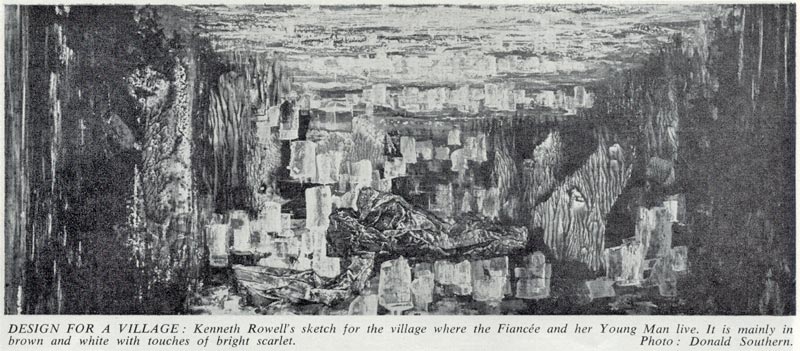
Le Baiser de la fée is a lure for choreographers, since its score, Stravinsky’s homage to Tchaikovsky, is so tempting. It was commissioned by Ida Rubinstein for her own company in 1928, choreographed by Bronislava Nijinska. Frederick Ashton danced in the original production before making his own version in 1935 for the Sadler’s Wells Ballet.

He had wanted to use Stravinsky’s score since the early 1950s, when he was involved with the touring company. He was warned that the company didn’t have the resources for such a big score, so he’d turned to Stravinsky’s Danses Concertantes instead. (It was on the reverse side of a recording of the Divertimento from Baiser.) Then, in 1957, there are letters to him from de Valois bemoaning the expense of securing the rights to Le Baiser de la fée. She assured him, however, that he would be able to go ahead.
Scottish Ballet: The Fairy’s Kiss – behind-the-scenes.
The difficulty was that Stravinsky would not allow any alteration to his scenario for the ballet in four scenes, based on Hans Christian Andersen’s fairy tale, The Ice Maiden. MacMillan’s alternative version was rejected. So the synopsis of his 1960 Baiser is much the same as Ashton’s and Balanchine’s (1950): A baby boy whose mother dies in a storm is kissed by the Ice Fairy. Twenty years later, when he is about to be married, the Fairy returns, disguised as a gypsy. She reclaims him with a kiss and takes him away from his fiançée into the Land Beyond Time and Place. Stravinsky intended the story to be an allegory of an artist’s muse (Tchaikovsky’s) diverting him from everyday life in order to grant him immortality.
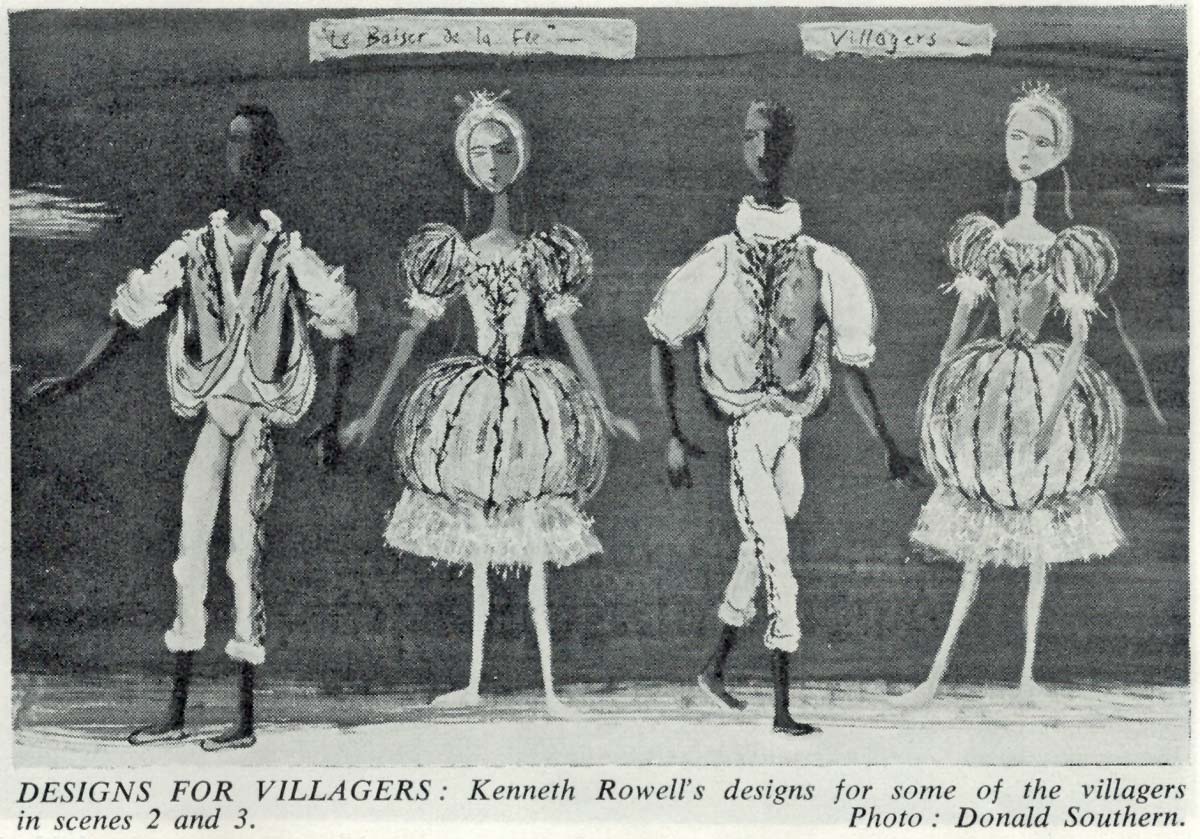
How to depict that apotheosis convincingly on stage? How to register that the baby in the first scene is the young man in the second? How to transform the gypsy into the fairy in just a few bars of music? In his own scenario, MacMillan had tried to get round the problems by starting with the boy as a bridegroom when he is first kissed by the Fairy. He is torn between her, as the gypsy, and his bride-to-be until he receives a final, fatal kiss from the Fairy. She snatches him away and the bride meets her death against the sharp icicles of the Fairy’s attendants.

© Eve McConnachie. (Click image for larger version)
Even though MacMillan was unable to use his scenario, his 1960 ballet, with young Lynn Seymour as the bride, centred on her plight rather than the young man’s transfiguration. The 1986 revival was closer to Stravinsky’s allegory. By returning to the original, Hampson says, ‘We can see the evolution of Kenneth’s choreographic signatures .We tend to take for granted certain ways of moving and lifting dancers that are now part of the choreographic lexicon – but someone did them first. And that was Kenneth MacMillan.’
Two years ago, Deborah MacMillan commissioned the complete notation of his 1960 choreography. Kenneth and John Cranko were the first choreographers to make use of Benesh notation – a written system of recording movement, using a music stave. Choreologist Faith Worth had started notating Baiser in 1960 but hadn’t completed a master score, so many sections were missing. Diana Curry, who worked with MacMillan in the 1980s, took on the task of retrieving all the original choreography. She had already notated Donald MacLeary’s recollection of the young man’s solo for a special event at Ivy House, and she could also refer to a film of the 1960 production made by the indefatigable Esmé Wood.
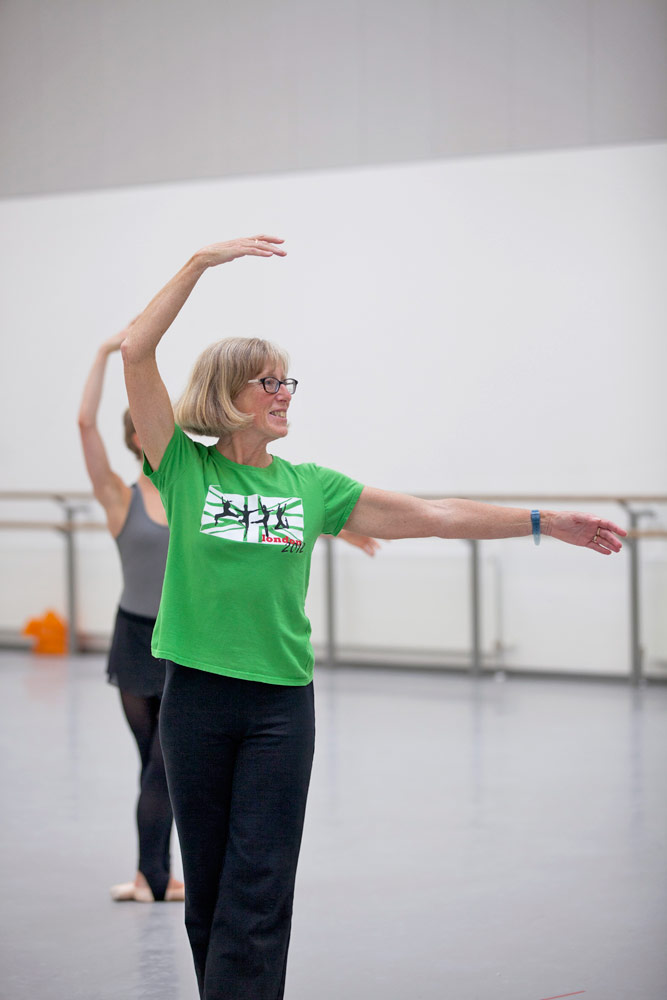
© Christina RIley. (Click image for larger version)
The black and white 16mm film, transferred onto VHS videotape, had been almost indecipherable until it could be digitised by telecine. The dancing figures are now clearly visible: Svetlana Beriosova as the Fairy, Seymour as the Bride, MacLeary as the Young Man, Jacqueline Daryl as the Gypsy. Curry has been able to notate the entire original production, and teach the choreography to the Scottish Ballet company. (Extracts from the film can be seen in Lynne Wake’s documentary, New Wave Ballet, to be shown on 20th and 21st October as part of the Insights programme on MacMillan’s work.)

I watched a corps de ballet rehearsal in Glasgow as Curry instructed the male Winds and the Fairy’s female attendants what to do in the first and last scenes of the ballet. In one sequence, the women had to appear to be rotating in arabesque on their own, although the men, hidden behind them, were supporting their legs. ‘I can’t see on the video how the boys are kneeling’, she told the dancers. ‘So you’ll have to work out whether you’re squatting or upright and where your hands go to turn the girls.’

© Christina RIley. (Click image for larger version)
Cue the recurring collapse of the couples in fits of laughter. After many negotiations, Curry congratulated them: ‘Quite a high percentage rate of success’. Neither the video nor the notated score can tell dancers exactly where their weight goes in off-balance positions, nor the securest way of manoeuvring an over-the-back lift. Experienced coaches like Curry have to advise. Donald MacLeary came in to assist the principals: Constance Devernay and Sophie Martin as the Fairy; Bethany Kingsley-Garner and Nicole Conti as the Bride; Andrew Peasgood and Barnaby Rook Bishop as the Young Man. Scottish Ballet livestreamed his rehearsal of the first cast on 29 September.
Donald MacLeary coaching The Fairy’s Kiss in the studios at Scottish Ballet. (30 minute video – original Facebook post)
The original designs for Le Baiser de la fée by Kenneth Rowell were lost, so Hampson commissioned Gary Harris to create new ones. Set changes need to be swift and suitable for touring, costumes suitable for a fantastic tale with an eerie ending. For the Land Beyond, Harris has adapted a photograph Deborah MacMillan took from a plane, flying over the South American Andes.

© Scottish Ballet. (Click image for larger version)
Harris, Curry and Hampson comment on how some of MacMillan’s familiar devices are already present in the choreography. One sequence of lifts, for example, is nicknamed ‘Romeo and Juliet’. Hampson points out how central pas de deux were to the structure of the ballet, as in his later works. ‘In Baiser there are five for the young man, with the fiançée, the Fairy and the gypsy – five pas de deux in a one-act ballet, and they’re all different. Kenneth was full of invention.’
When Scottish Ballet performs Baiser at the Royal Opera House, ballet-goers with long memories may be able to compare this version with the original and the 1986 revival, in which Jonathan Cope was the Young Man, Maria Almeida the Bride and Fiona Chadwick the Fairy. MacMillan reworked his choreography for the principals, while still relying on Faith Worth’s incomplete notation from 1960.

© Christina RIley. (Click image for larger version)
MacMillan and Peter Darrell, Scottish Ballet’s founder choreographer and director, had been friends from their early days as dancers. Whenever Darrell came to see performances at the Opera House, he would curtsey as Mary, Queen of Scots, to MacMillan as Bess, Queen of England, murmuring ‘ You know, of course, we never met.’ For the first time, in October, both their companies will appear on the Opera House stage. Together with dancers from Birmingham Royal Ballet, English National Ballet and Northern Ballet, Scottish Ballet dancers will take part in MacMillan’s Elite Syncopations, honouring his memory.











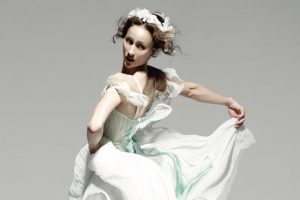


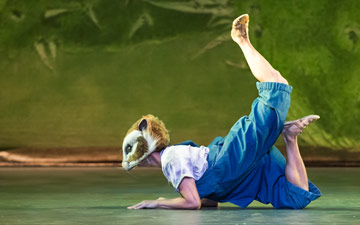


You must be logged in to post a comment.